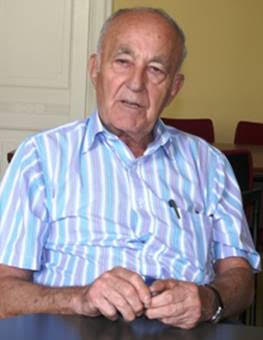
THE VOICE OF INTERNATIONAL LITHUANIA
|
VilNews has its own Google archive! Type a word in the above search box to find any article.
You can also follow us on Facebook. We have two different pages. Click to open and join.
|
Author Archive
- Posted by - (0) Comment
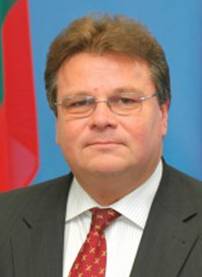
Lithuania’s new Foreign Minister Linas Linkevičius
Lithuania's new Foreign Minister Linas Linkevičius:
Let's be more polite to our neighbours
Talking and showing respect – such is the recipe that Lithuania's new Minister of Foreign Affairs Linas Linkevičius will follow in his quest to mend the country's soured relations with neighbouring nations.
In an interview to 15min, Linkevičius says that Lithuania must not be hostage to the past in dealing with Russia; should balance democratic values with pragmatic interests in its treatment of Belarus, and give up the sense of indignation and be more polite while talking to Poland – and keep the old promises once made by Vilnius to Warsaw.
– What are your nearest plans and what's the agenda for the entire term?
– Presidency over the Council of the European Union next year makes all other tasks pale in comparison. All the attention is now focused on this job – not just in our ministry but in all state institutions. What is crucial is a smooth cooperation among them.
When it comes to good neighbourly relations, I still see much room for improvement.
I am a man of consensus, that's what I always seek and I value agreement in areas like defence, foreign policy, security.
Foreign policy requires less revolution and more continuity. In the wake of our independence, we had three main priorities: membership in the EU, joining NATO, and friendly neighbourhood. The first two tasks have been accomplished, but when it comes to good neighbourly relations, I still see much room for improvement. I do not want to be over-dramatic, but nor do I wish to be indulgent.
– What directions will our foreign policy take, geographically speaking?
– There's no either-or in such matters – we need to look in all directions. Neighbours can be different, but they are important to all states. We share EU and NATO membership with Latvia and Poland, we have a common agenda and values, even though there are certain variations. Belarus and Russia have chosen a different path, but that does not mean we have to be slaves to our prejudices and drown ourselves in analysis of differences.
- Bookmark :
- Digg
- del.icio.us
- Stumbleupon
- Redit it
- Posted by - (0) Comment
CELEBRATING
WINTER SOLSTICE
The Winter Solstice is unique among days of the year — the time of the longest night and the shortest day. The dark triumphs but only briefly. For the Solstice is also a turning point. From now on (until the Summer Solstice, at any rate), the nights grow shorter and the days grow longer, the dark wanes and the Sun waxes in power. From the dark womb of the night, the light is born.
- Bookmark :
- Digg
- del.icio.us
- Stumbleupon
- Redit it
- Posted by - (0) Comment
CELEBRATING WINTER SOLSTICE

By Waverly Fitzgerald
The Winter Solstice is unique among days of the year — the time of the longest night and the shortest day. The dark triumphs but only briefly. For the Solstice is also a turning point. From now on (until the Summer Solstice, at any rate), the nights grow shorter and the days grow longer, the dark wanes and the Sun waxes in power. From the dark womb of the night, the light is born.
Many of the customs associated with the Winter Solstice (and therefore with other midwinter festivals such as St Lucy’s Day, Saturnalia, Hanukkah, New Years and Twelfth Night) derive from stories of a mighty battle between the dark and the light, which is won, naturally, by the light. Other traditions record this as the time a savior (the Sun-Child) is born to a virgin mother.
The Battle Between Old and New, Dark and Light
The Romans celebrated from December 17th to December 24th with a festival called Saturnalia, during which all work was put aside in favor of feasting and gambling. The social order was reversed, with masters waiting on their slaves. The Saturnalia is named after Saturn, who is often depicted with a sickle like the figures of Death or Old Father Time. Astrologically speaking, Saturn is saturnine: gloomy, old, dutiful and heavy. He was the god who ate his own children rather than let them surpass him. For new life to flourish, for the sun to rise again, it is necessary to vanquish this gloomy old fellow. Therefore, the feasting and merriment of the midwinter season are religiously mandated in order to combat the forces of gloom.
The day following the Saturnalia, was the Juvenalia, according to Z Budapest in The Grandmother of Time, a holiday in honor of children who were entertained, feasted and given good luck talismans. This makes sense. After vanquishing the Old King, it’s time to celebrate the new in the form of children, the New Year's Baby, the Son of Man. Naturally this is the time of the year at which the birth of Christ is celebrated, since he is also the New King, the Light of the World who brings light.
The Birth of the Sun
Christ’s birthday was not celebrated on December 25th until the 4th century. Before then, December 25th was best known as the birthday of the Persian hero and sun-god, Mithra. The myth tells that he sprang up full-grown from a rock, armed with a knife and carrying a torch. Shepherds watched his miraculous appearance and hurried to greet him with the first fruits of their flocks and their harvests. The cult of Mithra spread all over the Roman empire. In 274 AD, the Roman emperor Valerian declared December 25th the Birthday of Sol Invictus, the Unconquerable Sun.
Christ was also not the first miraculous child born to a virgin mother. As Marina Warner points out, “the virgin birth of heroes and sages was a widespread formula in the Hellenistic world: Pythagorus, Plato, Alexander were all believed to be born of woman by the power of a holy spirit.”
The union of a virgin and a supernatural force, like the couplings between Zeus and various nymphs, was shorthand indicating the presence of a miraculous child, a child with the powers of both worlds. Dionysus is such a child, born of a union between Zeus and Semele.
Parke in Festivals of the Athenians describes a women-only midwinter festival, the Lenaia, which honored Dionysos. On this night, Greek women “held their ecstatic dances in winter — fully clothed in Greek dress, with castanets or the thyrsus, dancing together with no male companions, human or satyr.” Graves calls it the Lenaea, the Festival of Wild Women (a nice companion for the Festival of Merry Women on Dec 14). He says a bull, representing Dionysus, was cut into nine pieces, with one piece being burned and the rest consumed raw by the worshippers. Dionysus was born in winter, crowned with serpents, became a lion in the spring and was sacrificed as a bull (stag or goat) in the summer because these were calendar emblems of the old tripartite year. Marija Gimbutas in Goddesses and Gods of Old Europe calls Dionysus a Year God. Mithra was also associated with the bull (his initates were baptized with the blood of a sacrificed bull) and shown with the emblems of the zodiac surrounding him, suggesting that he is also a Year God.
The Lenaia occurred on the twelfth day of the Greek lunar month, Gamelion, which falls in early winter. The twelfth day of a lunar month (which begins with the new moon) always falls on a full moon night. If we move this lunar festival to the solar calendar and count from the winter solstice, the festival would occur on January 5th or 6th.
Until the fourth century, Christ’s birthday was celebrated on January 6th, on the same date when the Virgin Kore gave birth to the year god celebrated in Alexandria with a festival called the Koreion. St. Epiphanius complains about the hideous mockery of this rite but it preceded the story of Christ’s birth. In the original ritual, the image of the goddess, decorated with gold stars, was carried seven times around her temple as the priests cried, “The Virgin has brought forth the new Aeon!”
Although Aeon, or Eon, is now defined as “an indefinitely long period of time; an age, eternity,” its Indo-European root aiw conveyed “vital force, life, long life, eternity,” and the Greek form Aion meant specifically “vital force.” [Farias]
This description recalls the Egyptian ceremony re-enacting the birth of Horus, the sun-god to Isis. All lights in the city were doused while Isis circled the sarcophagus seven times, then brought forth Horus who was called “the Light of the World.” Statues of Isis holding the newly born sun god on her lap, presenting him to the world, are similar to pose to later statues representing Mary and Jesus.

Festival of Lights
The return of the light is the most prominent feature of most midwinter festivals. In Sweden on St. Lucy’s Day, young girls don white dresses and a wreath of candles and awaken their families with cakes and song. Hanukkah, the Festival of Lights, is celebrated by lighting candles over a span of eight days. The Christian custom of the Advent wreath, with its four candles, one lit each of the Sundays before Christmas, is another way of re-kindling the light.
The Christmas candle, a large candle of red or some other bright color decorated with holly or other evergreens, was at one time a popular custom throughout Great Britain, Ireland and Scandinavia. One person, usually the eldest or the head of the household, is designated as the lightbringer. She lights the candle for the first time on Christmas Eve before the festive supper and during each of the remaining evenings of the Twelve Days of Christmas. To extinguish the candle, she snuffs it with tongs rather than blowing it out, since that would blow the luck away. The candle sheds a blessing on the household and so is protected from accidental quenching. It seems likely that the candle also represented the coming year, just as the weather of each of the twelve days of Christmas foretell the weather of the corresponding month. It had protective or fertilizing powers and was kept as a charm. In Denmark, during a lightning storm, the remnant would be brought out and lit to protect the household.
Similar customs once surrounded the Yule log. The Yule log must never be bought but should be received as a gift, found or taken from you own property. Often the log to be burned at midwinter was chosen early in the year and set aside.
Tradition varies about the type of wood to be used. Oak logs were popular in the north of England, birch in Scotland and ash in Cornwall and Devon. Ash is the only wood that burns freely when green and the world-tree, Yggdrasil, in the Nordic tradition was an ash-tree. It is important that the Yule log be the biggest and greenest log available since the Christmas festivities will last only as long as the Yule log burns.
In some parts of the Scottish highlands, the head of the household finds a withered stump and carves it into the likeness of an old woman, the Cailleach Nollaich or Christmas Old Wife, a sinister being representing the evils of winter and death. She's the goddess of winter, the hag of night, the old one who brings death. Burning her drives away the winter and protects the occupants of the household from death.
The Yule log is first brought into the house with great ceremony on Christmas Eve (or the eve of solstice, if one prefers). Usually it is decorated with holly and ivy and other evergreens of the season. Some people prefer to use the Yule log as a decoration and place candles on it instead, thus transforming it into a candleabra like the menorah or the kinara. It is lit with a piece of last year's log as described in Herrick’s poem, “Hesperides:”
Come bring with a noise
My merry, merry boys
The Christmas log to the firing
With the last year's brand.
Light the new block,
And for good success in his spending
On your psalteries play:
That sweet luck may
Come while the log is a-teendling.
In Italy, the Yule log is called the Ceppo. Boccaccio in the fourteenth century described a Florentine family gathering about the hearth and pouring a libation of wine upon the glowing wood, then sharing the remaining wine, thus linking the Yule log with the custom of wassailing, pouring out libations to the trees in the orchard.
The Yule log is left to burn all night, and, if possible, through the next twelve without going out, although it may be extinguished with water. The ashes are kept for good luck. They have magical properties and can be scattered in the field to fertilize the soil or sprinkled around the house for protection.
The Solstice Evergreen
Another ancient midwinter custom is decorating with greens. The Romans decorated with rosemary, bay, laurel, holly, ivy and mistletoe. The holly and ivy were both important midwinter plants in Great Britain and Ireland, as seen in the mysterious medieval carol which mentions the rivalry between them. Matthews in The Winter Solstice provides the lyrics of a 15th century carol which refers to an ancient battle between the two, with the Ivy representing the cold gloominess of winter and the Holly King, the jolly spirit of the season.
The Christmas tree is of more recent origin. In her book, The Solstice Evergreen, Sheryl Ann Karas says that the earliest record of an evergreen being decorated comes from Riga in Latvia in 1519, when a group of local merchants carried an evergreen bedecked with flowers to the marketplace, where they danced around it and then burned it. Another possible source is the custom in 15th and 16th century Germany of hanging apples on a fir tree as a prop for the miracle play performed on Christmas eve depicting Adam and Eve being driven out of Paradise (see Dec 24).
Celebrating Yule
You should enjoy yourself as much as possible on the Winter Solstice because this will bring back light (and lightness) into the world. Different traditions mention feasting, gambling, playing pranks, giving gifts, visiting, drinking, dressing up, fornicating, putting on plays and staying up all night. During the dark of winter, invoke all the forces of pleasure and love which make life worth living.
Decorating for this festival is easy since you can use all your Christmas decorations. Evergreens and wreaths represent rebirth and the circle of life. Fill your home with candles and Christmas lights. Place them on mirrors, hang up lots of sparkly ornaments and prisms and tinsel so you can create as much light as possible.

Sitting in the Dark
Earlier traditions focused on the battle between the dark and the light, but we know both are valuable. Honor the dark before calling in the light. This is the season when animals hibernate and nature sleeps and we can turn inward too. Perhaps some of the depression people feel during the holidays comes from not providing a space for feeling the sadness associated with this season. Set aside time (hard to do amidst the frenzy of the holidays) for sitting in the dark and quiet. I like to spend the entire day of the Winter Solstice in silence and reflection.
This is a natural time for letting go and saying farewell. Release your resentments and regrets into the darkness, knowing they will be transformed. Write about them in your journal or write them on slips of paper which you can burn in your Yule fire. Use your holiday cards to make amends to people you've hurt or neglected.
Welcoming the Light
When you light your candles and your fire, do so with the intention of bringing light into the world. What are the ways in which you can help make the world lighter? How do you bring light into the lives of those around you? Make a conscious effort to increase the amount of light you create. Nancy Brady Cunningham describes a simple yet elegant Winter Solstice ritual in Feeding the Spirit which is appropriate for a large group or a couple, for children and adults, and for people of all religious persuasions. It goes something like this:
Decorate a room with winter greenery. Place a large bowl of water and a candle in the center of the room. Have some gold glitter and scented oil nearby. Give each of the participants a candle (with some kind of holder if you’re worried about drips). Everyone sits in a circle with a lit candle in front of them and talks about their losses, putting out their candle when they're done speaking. When all are done, the central candle is extinguished and everyone sits in the darkness reflecting on what they have lost. After a long silence, the leader relights the central candle which represents the sun and sprinkles the gold glitter on the water. Everyone lights their candles from the central candle and places them by the water so they can watch the glitter sparkling there. This is a good time to sing a sun song, like “Here Comes the Sun,” or “You Are My Sunshine.” Pass around a glass of wine or juice and toast the sun. The sun-child is the child of promise. Everyone can talk about a promise they see in the future. The leader puts the scented oil in the water and anoints each person with sunshine by dipping her hand into the sparkling, scented water and sprinkling it over each person’s hair.
I do a similar ritual at my Winter Solstice party. When the guests arrive the house is bright with Christmas lights and candles, but at some point during the evening I turn off the lights and blow out the candles and ask the guests to spend a few moments in the darkness and silence reflecting on these qualities of the winter. Then I tell the story of St Lucy and play the traditional Lucy song. As the song is playing, from out of the darkness, faint at first and growing stronger, comes the wavering light of a candle, carried by St Lucy (a role which is coveted by the younger members of the party). She is dressed in white with a crown of candles on her head and her face as she advances through the darkness, ever so intent on the candle she carries before her, is radiant. There is usually a gasp from the assembled guests, so numinous is this figure. St Lucy lights the central candle in the Advent wreath, then I invite the guests to bring their own candles to the flame to light them and make a wish for the New Year. St Lucy disappears into the darkness to reappear again as Shaw or Leah or Amy, and the house is soon full of lights and noise as we talk and listen to carols and feast on the thirteen kinds of Christmas cookies I prepare for this occasion.

- Bookmark :
- Digg
- del.icio.us
- Stumbleupon
- Redit it
- Posted by - (1) Comment
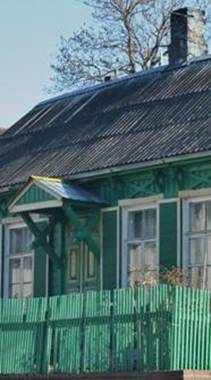
Wooden house in the Vilnius district of Uzupis. See also our VilNews slide show “Uzupis spring 2012”.
CLICK HERE to see the show.
Anyone ready to support us in saving the wooden houses in Vilnius and around in Lithuania?
Mr. Myhre;
You hit the bull in the eye by saying that the public’s understanding of the importance of this task is not very high. I have spent a bigger part of my professional life in fundraising and I see the problems ahead. I’d say, the first step is to start a campaign in raising the awareness of the people of the importance of Uzhupis and only when you see that the project is feasible, you roll up your sleeves.
Irena Cade
Amherst, MA
U.S.A.
__________________________

Tatjana Grigorjeva It's a good idea!
Wooden houses like this one, is a heritage of Lithuania!

Carol Luschas Taip!

Jenn Virskus Taip!

Milda Arquer Yes ! Those houses are really among the lithuanian symbols and heritages of the past !

Jurate Kutkus Burns Absolutely! Once they are gone, they cannot be replaced.

Irene Simanavicius What do you need? how can we help? Let's get going!!! :)

Ramute Julia Zukas Yes Aage, what help can we give?

Wyman Brent I guess it is considered progress to destroy the past. What a shame.

Boris Bakunas Yes, yes, and yes again!

Warren Thompson Yes

Danguole Juska heritage...

Rasa Mekuskaite Oho, it's maybe the first time when i can see the same coluor on a house and on a fence. And this light green hue. Where is it?

Aage Myhre It's in your beloved Uzupis, Rasa :)

Rasa Mekuskaite OK:)

Jan H. Hovde Do you have a plan?

Aage Myhre Vilnius Municipality has a plan, but has not been able to implement it due to financial reasons. Also, I have to say that the public understanding of the importance of keeping and maintaining this cultural treasure is not very high. I will now try to apply for EEA/Norwegian Grants and see what can be done, and it's seriously urgent as the majority of these buildings are in very bad conditions.

Linas Johansonas Who owns these houses?

Aage Myhre Private people, families, who simply were 'installed' there during the Soviet years, then given ownership rights to their apartments after 1991. Most of the families are poor people with no means to renovate or take care of their homes, hence public support is necessary.

Tomas Chepaitis Of course, sure, we should save them - some in Zhverynas are already destroyed

Tomas Chepaitis ...but destruction comes mostly from the architectural mafia:) or municipality, isn't it so, Your Excellency Architect of the Universe?
- Bookmark :
- Digg
- del.icio.us
- Stumbleupon
- Redit it
- Posted by - (0) Comment

Lithuanian parliament strips Labour MP Viktor Uspaskich of legal immunity
86 Lithuanian lawmakers voted in favor of a draft resolution on immunity cancelation, 29 voted against and 15 abstained. At least 71 MPs need to support such a motion in order to pass it.
The Social Democrats, conservatives, and liberals unanimously voted in favor of the resolution as did three members of the non-affiliated political group and three members of the Path of Courage Party's political group, Aurelija Stancikienė, Vytautas Matulevičius, and Algirdas Patackas. Other members of the latter group did not attend the vote.
Petras Gražulis, elder of the Order and Justice Party group, had proposed to hold a secret ballot but the proposal was rejected.
- Bookmark :
- Digg
- del.icio.us
- Stumbleupon
- Redit it
- Posted by - (0) Comment
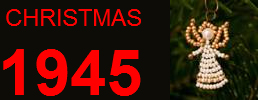
2nd World War was over
- though not in Lithuania
Christmas of 1945 was over most of the world celebrated with a joy and delight almost never before seen. Young and old gathered in homes, on streets and in churches. An endless series of victory ceremonies took place in almost every corner of the world. With a deep sense of joy and gratitude all wanted each other warm, comfortable and relaxing Christmas holidays, knowing that the Nazi era was over and that the world now more than ever could look forward to a future of peace and prosperity. The war had finally released the grip, forgotten was the economic recession of the 1930s. Forgotten was also our Western World’s close friends and neighbours - the Baltic States.
On a small farm in northern Lithuania, in the outskirts of the village Šilagalis, Christmas 1945 is nearing. It is the 22nd of December, and the mother of the house feels very happy that her 21 year old son Povilas has finally come home to visit after having been away for many months.
He has come to change into dry clothes to keep him warm through the cold winter days waiting. His mother is infinitely happy to have her son home this one day, and she does everything she can to treat him with all the good food and drink their little farm can produce. You never know how long it will be till next time.
Povilas had joined a local partisan group earlier in 1945, and now spends all time in the North Lithuanian forests where the local "forest brothers" have established their hideouts. It is from these caches, usually at night, that they conduct their operations against military installations and forces of the Soviet Red Army and NKVD (the secret Soviet police that later changed name to KGB).
- Bookmark :
- Digg
- del.icio.us
- Stumbleupon
- Redit it
- Posted by - (0) Comment

2nd World War was over
- though not in Lithuania
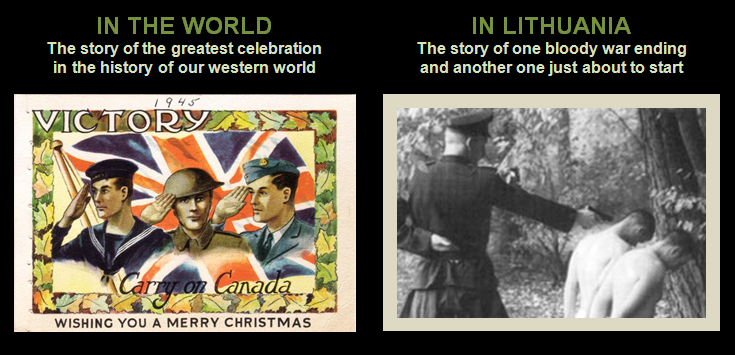
Christmas of 1945 was over most of the world celebrated with a joy and delight almost never before seen. Young and old gathered in homes, on streets and in churches. An endless series of victory ceremonies took place in almost every corner of the world. With a deep sense of joy and gratitude all wanted each other warm, comfortable and relaxing Christmas holidays, knowing that the Nazi era was over and that the world now more than ever could look forward to a future of peace and prosperity. The war had finally released the grip, forgotten was the economic recession of the 1930s. Forgotten was also our Western World’s close friends and neighbours - the Baltic States.
On a small farm in northern Lithuania, in the outskirts of the village Šilagalis, Christmas 1945 is nearing. It is the 22nd of December, and the mother of the house feels very happy that her 21 year old son Povilas has finally come home to visit after having been away for many months.
He has come to change into dry clothes to keep him warm through the cold winter days waiting. His mother is infinitely happy to have her son home this one day, and she does everything she can to treat him with all the good food and drink their little farm can produce. You never know how long it will be till next time.
Povilas had joined a local partisan group earlier in 1945, and now spends all time in the North Lithuanian forests where the local "forest brothers" have established their hideouts. It is from these caches, usually at night, that they conduct their operations against military installations and forces of the Soviet Red Army and NKVD (the secret Soviet police that later changed name to KGB).
The Soviet occupation of Lithuania has lasted for more than a year now, but Povilas and other forest brothers still hope that their constant needle sticks can get Josef Stalin to pull his troops out of Lithuania and the other two Baltic countries.
Povilas is pleased to finally have got a day off, not least is he happy to eat real Christmas food and enjoy some Christmas cheer with the family. A small fly in the ointment is the fact that his father, little sister and little brother are not home.
Both the brother and the sister go to a boarding school in the nearest town, Panevežys, and his father had early in the morning that same day left for the town to bring them home for Christmas. But his mother is here, and when she and he, with arms around each other, go out in the barn to feed the animals, he sings with joy a song he so often has sung in the partisan camp in recent months:
"Dying young is difficult, but not for my country. For my country, Lithuania, I am ready to sacrifice my young life. "
His mother scolds him motherly strictly that he sings: "You know it is not proper to sing now that it's Advent," she says. Lithuania's Roman Catholic Church is strict when it comes to how to behave through the various festive times of the year, and his mother admonishes her son, therefore, while at the same time feeling proud and happy that he makes such an honourable service to the home country.
Back in the farmhouse they suddenly hear that the dog starts to bark. Through the window they see a group of soldiers approaching. The soldiers are still on some distance, so Povilas has time to hide in a small cellar room they have made beneath the living room floor, and the mother has time to cover the cellar hatch as best she can.
The cellar room has also previously been used to hide partisans, and both think this is a safe hiding place until the soldiers have left again.
The mother walks out into the yard to meet the soldiers from the Soviet Red Army. They ask if her son is home, and if he, in case, is alone. Without waiting for an answer, they storm into the house and begin to turn upside down on furniture and fixtures. Then they start shooting down to the floor to see if it can be cavities under the floorboards. It takes some time before they discover the cellar hatch, but as soon as they find and open it, they fire a machinegun volley into the hole. It does not take long before they pull the now perforated and lifeless body of Povilas out of the basement. The whole operation has taken them five hours, but they have found what they sought. One more young Lithuanian life has been lost in the desperate struggle against the overwhelming odds.
The distance from the farm to the road is over 500 meters, so the soldiers find a chain in the barn so they can tow the corpse of Povilas across the fields over to the military vehicle waiting. The mother is forced to follow, and soon they are on their way to the NKVD headquarters in Panevezys, where the body of Povilas is thrown out in the middle of the courtyard. His mother is brought to a prison cell in the basement.
Early next morning, Christmas Eve 1945, the mother is brutally dragged up from the wooden bench she has laid sleepless on during the night. Today, and every subsequent day for two weeks, she is brought up to ever-new interrogations, walking across the courtyard where the mutilated body of her son still is lying.
Christmas and New Year holiday season in 1945 passes with this terrible routine for a mother in tears and sorrow. Early in January, she is released and can finally go home and tell the family what has happened.
In thousands of homes around the world happy families walk around their Christmas trees. They celebrate that Jesus is born and the world's evil is overcome. 1946 is the beginning of the new and bright times for the human kind…
In northern Lithuania the parents of Povilas and other parents finally find out where the bodies of their killed young partisan sons have been dumped. Under the cover of dark nights in early January 1946, they manage to bring the bodies of their children home to secret burials in their hometown cemeteries.
Christmas 1945 is over. Most of the world looks forward to many good years of peace, freedom and economic growth. The Baltic States' ten-year guerrilla war against the occupiers has just begun.
* * *![]()
The story of Povilas is real. It is based on a passage from the book "Lithuania's struggle for freedom" (Lithuanian Partisans' War Chronicles).
Povilas Peleckas was born on 24 January 1924 into a farming family in the village of Šilagalis in the Panevežys district north in Lithuania. He attended Šilagalis primary school. Later he helped his parents on the farm. In 1944 when the USSR invaded and occupied Lithuania for the second time (first time was in 1940), Povilas was due for conscription into the Red Army. He refused to go. When a local partisan unit was formed, led by Major Januškevičius, Povilas joined the fighters. In September 1945 many of the members of the unit were killed in battle, and another three were killed at the beginning of December. Those who remained alive determined to join a larger partisan unit. But fate was against them.
|
“Across America, people crowd churches praying with gratitude for the peace in place, and reach out to wounded veterans, children who lost fathers, and neighbors who lost sons. Americans in big cities and small, participate in displays of the intrinsic love so indicative of the American spirit.” |
In 1944-45 Lithuanians were forced to realize that the bloody World War II had been replaced by a new war, the longest and bloodiest guerrilla war in modern European history, lasting from 1944 to at least 1953. |
- Bookmark :
- Digg
- del.icio.us
- Stumbleupon
- Redit it
The West ignored all Soviet abuses!
- Posted by - (0) Comment
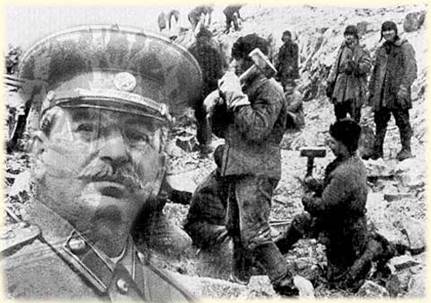
Joseph Stalin (1878 – 1953) One of the most powerful and murderous dictators in history, Stalin was the supreme ruler of the Soviet Union for a quarter of a century. His regime of terror caused the death and suffering of tens of millions, but he also oversaw the war machine that played a key role in the defeat of Nazism. Illustration: http://sspurlock.wordpress.com
By Tony Olsson, North Devon, UK (guest blogger)
How could the western nations ignore the abuse by its wartime ally the USSR of all of the countries it had conquered during WW2?
Why didn’t America and Britain declare war on the USSR as its tanks and troops invaded Hungary, Czechoslovakia, and Poland?
- Bookmark :
- Digg
- del.icio.us
- Stumbleupon
- Redit it
- Posted by - (0) Comment
The longest and bloodiest
partisan war in modern Europe
LITHUANIA, LATVIA & ESTONIA 1944 – 1953
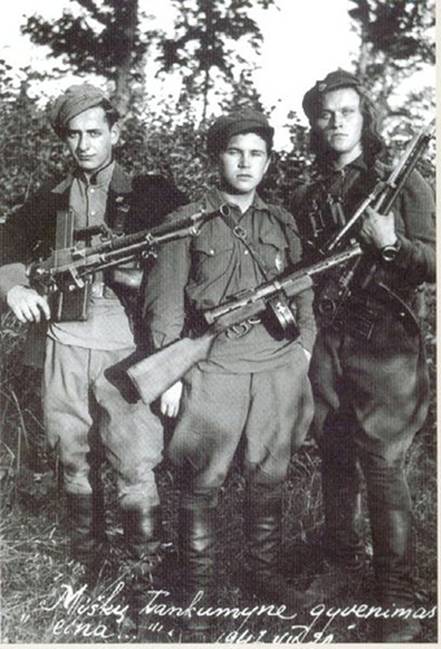
Lithuanian ‘forest brothers’ from the so-called "Vytis" military district.
Text: Aage Myhre, VilNews Editor-in-Chief
Tell a Lithuanian that his country was liberated and peace after WWII was restored on the 9th of May 1945, as the Russians claim. Tell him that this 2011 May it is 66 years since the Soviet Union and the Western world defeated Hitler's Nazi regime, and that Lithuania since then has been a free, happy country in line with what other European countries experienced after they were occupied in 1939 – 1940 and liberated in 1945. Do not be surprised if you get an angry and annoyed look back. For while we in the Western world, in Russia and in other parts of the world joyfully could celebrate the liberation and the recovered freedom after the World War, Lithuania, the other two Baltic states, and Ukraine were forced to realize that one war had been replaced by a new, much bloodier and more protracted war, lasting from 1944 to at least 1953. What we in the west celebrated in May 1945 was by Lithuanians and the other occupied countries experienced only in 1990 –1991.
- Bookmark :
- Digg
- del.icio.us
- Stumbleupon
- Redit it
- Posted by - (0) Comment
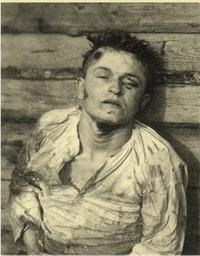
One of the many killed Lithuanian partisans, Juozas Luksa – "Skirmantas", "Daumantas", after his death on the 4th of September 1951.
Photo: KGB
The inconvenient truth is that you in the West preferred not to know
I learned that the hard way, from my grandparents & other family who closely worked with Skirmantas and other top Lithuanian freedom war leaders in the Seinai-Punskas (Sejny-Punsk), Poland, during their secret border crossing missions to the West (via Gdansk and Warsaw) and back to Lithuania in 1946-50. My family was put in hard-regime prisons for that, all the hard earned property confiscated, and I was born a communist slave, so to speak. While in high school I rebelled against the Soviet occupation of Lithuania, was arrested and thrown out of school, persecuted for a long time by communist secret services, and finally made my way to the West: Glory Be to God!
Yours sincerely,
Valdas Samonis,
Canada
P.S. My family was decorated with Lithuania's top freedom medals by President Adamkus. I was officially recognized by free Poland (IPN) as the freedom activist persecuted by the communist regime.
__________________________
But the spirit of Lithuania is still not free
Hi Aage,
I found your article interesting and would like to get more of them. After looking at those young faces, who lost their lives for the freedom of Lithuania, I realize that these days we have freedom, but the spirit of Lithuanian is still not free, rather haunted by the past challenging experiences. I believe that eventually we will become free and will start feeling worthy again.
Sincerely,
Aušra,
USA
__________________________
In my opinion it is a mistake to confuse resistance to occupation and the second world war

The Second World War in Europe was a war fought against fascism – in particular the German variant exemplified by Nazism – and including also Italian fascism. The Second World War in Europe ended with the surrender of Germany; a surrender to which Russia was the major contributor because Germany was largely defeated at Stalingrad and Kursk and was always in retreat afterwards.
The Resistance in Lithuania against Soviet occupation was a heroic effort by some Lithuanians to obtain freedom for their country. In my opinion it is a mistake to confuse resistance to occupation and the Second World War. After the end of the Second World War there have been many occupations of many countries by Capitalist and Communist powers and each side has tried to characterise any resistance to its forces as an act of the 'Other' side.
Resistance to Occupation has a very long and courageous history in Europe and throughout the world and no 'side' has a right to claim the heroic activities of resistance fighters/activists to support its ideology. Inevitably that requires misrepresentation of the motives and objectives of the resistance; part of the theme of the book "The Ugly American" about the then developing Vietnamese war. It is also the type of misrepresentation that leads to one 'side' claiming "We are all Georgians now".
This misrepresentation is a major cause of the inability of 'Western' countries to think in any clear way about the activities grouped under the label of 'terrorism' and it is better to avoid such ideologically driven commentary/analysis.
Kindest Regards
Robert Jennings,
Ireland-Lithuania
__________________________
The ‘war against fascism’ was a construct intended to make the Soviet Union look good
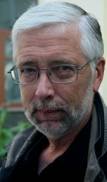
Mr. Robert Jennings's letter, in which he claims that the Second World War was a war against fascism and nothing else, obfuscates the truth rather than clarifies it.
No one declared war on fascism. If they had, Spain and Portugal would have between attacked. The United Sates and other powers declared war against the axis powers. The "war against fascism" was a construct intended to make the Soviet Union look good and to disguise its own crimes. How was the Soviet invasion of Finland in 1939 a war against fascism? What about the forced incorporation of the Baltic States into the Soviet Union well before any war with Germany? What about the Molotov-Ribbentrop pact, which divided Eastern Europe between the Soviet Union and Germany? Would the Poles agree that the war was a war against fascism? Was the murder of the Polish officers at Katyn part of the war against fascism?
Neither Tony Judt nor Norman Davies, prominent historians of Europe, would agree that the conflict which only ended in 1989 with the fall of the Berlin wall was a "war against fascism."
Who benefits by such a formulation? Only the Soviets, whose crimes become excusable excesses of war. The independent Lithuanian government now considers the last anti-Soviet partisan commander, Jonas Zemaitis, to have been the Lithuanian head of state. It seems that L Beria considered him the same way because upon his capture in 1953, Zemaitis was transported to Moscow and interviewed by Beria who seemed to be seeking accommodation now that Stalin had died. However, both Zemaitis and Beria were executed that same year.
WW2 is remembered as a "good war", but this is a formulation that works only on the western side, where the allies came to help brave resisters such as the French underground. There were brave underground resisters in the East too, but no one ever came to help them. They fought until the dies, were captured, or gave up. Their story is just coming out now.
Antanas Sileika,
Canada
__________________________
Unfortunately you are giving some credit to the British intelligence
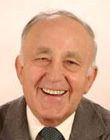
Thank you for the very moving story about the post WWII partisans. Unfortunately on page 6 you are giving some credit to the British intelligence, even though later on you mention Philby as having been responsible for the vicious death of thousands of the Baltic partisans. In fact the entire top levels of MI5 and MI6 since late 30's through early 70s were thoroughly penetrated by Britishers serving the soviet espionage services. Peter Wright in his book "the Spycatcher" identified Maclean, Burgess, Blake, Sinclair, Roger Hollis and numerous others who participated in setting up contacts with the partisans while assuring that the KGB was in full knowledge and control of their every movement and contact. Unfortunately, the doomed fighters sincerely believed for a long time that the British were on their side while being betrayed and delivered into the hands of the KGB.
In my view, it is also the British who have much to apologize to the thousands and thousands of victims for the vicious treachery in peace time of their MI5 and MI6 services.
Stan Backaitis
Washington, D.C. , USA
- Bookmark :
- Digg
- del.icio.us
- Stumbleupon
- Redit it
- Posted by - (0) Comment

Join the ‘Victims of Communism Memorial Foundation’
The Victims of Communism Memorial Foundation, a non-profit educational organization, was established by an Act of Congress to build a memorial in Washington, D.C. to commemorate the more than 100 million victims of communism.
Mission
The mission of The Victims of Communism Memorial Foundation is to educate this generation and future generations about the history, philosophy, and legacy of communism.
Read more…
- Bookmark :
- Digg
- del.icio.us
- Stumbleupon
- Redit it
- Posted by - (0) Comment
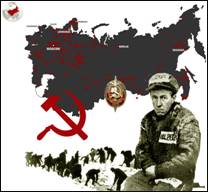
“It is unthinkable in the twentieth century to fail to distinguish between what constitutes an abominable atrocity that must be prosecuted and what constitutes that "past" which "ought not to be stirred up.”
― Aleksandr I. Solzhenitsyn, The Gulag Archipelago 1918-1956
Read more...
- Bookmark :
- Digg
- del.icio.us
- Stumbleupon
- Redit it
The West ignored all Soviet abuses!
- Posted by - (4) Comment

Joseph Stalin (1878 – 1953) One of the most powerful and murderous dictators in history, Stalin was the supreme ruler of the Soviet Union for a quarter of a century. His regime of terror caused the death and suffering of tens of millions, but he also oversaw the war machine that played a key role in the defeat of Nazism.
Illustration: http://sspurlock.wordpress.com
By Tony Olsson, North Devon, UK (guest blogger)
How could the western nations ignore the abuse by its wartime ally the USSR of all of the countries it had conquered during WW2?
Why didn’t America and Britain declare war on the USSR as its tanks and troops invaded Hungary, Czechoslovakia, and Poland?
Why was the attempt by Gorbachev to bring the Baltic States countries to heel by armed force ignored by the British press?
Why do western arms manufacturers sell guns and tanks and war planes to corrupt regimes that they know cannot act responsibly?
Why did the western nations not only not take punitive action against China for the Tiananmen Square massacre and on-going human rights abuses, but have put their countries in hock to China by closing down and moving the bulk of their manufacturing capacity to that country?
Why did NATO take so long to decide to act against Libya, and why hasn’t it acted against the rulers of Syria, Yemen, Zimbabwe and ... ? I could go on and on; the list is endless.
And why hasn’t action been taken against the rulers of Israel and Russia for the atrocities they are inflicting against other nations in the support of their own vested interests?
If Russia did invade in order to bring “its” Baltic republics back into the fold, would NATO come to their aid?
I was born the day President Roosevelt of America died a couple of weeks before the end of WW2, so have lived through, but mercifully have not been involved in any of the above conflicts. I can remember as an eleven year old, being very angry that Britain and America did not go to the aid of Hungary in 1956. The invasion of Czechoslovakia produced the same reaction, but was tempered by the bizarre coincidence that on the day the USSR invaded, I was at a concert in Norwich, England, given by the USSR State Symphony Orchestra conducted by Maxim Shostakovich. I think his father’s 5th Symphony was one of the works performed.
Sadly the answers to the questions boil down to VESTED INTERESTS.
A fear of WW3 is always at the back of the mind, but none of the major conflicts since 1945 has gone that far. It can’t be ruled out though..
So ultimately it comes down to smaller scale vested interests, all of which revolve around money: the arms manufacturers who don’t care who gets killed as long as they make a profit; the financiers who make money by investing money with firms who do business with corrupt regimes; the manufacturing bosses who put thousands out of work because they will make bigger profits if they move production to other countries (and I’m not talking just about China here); the politicians who will not act against a corrupt regime because that could result in reprisals against the organisations doing business with the corrupt regime; the group of countries that will not support a member that wants to act out of line, or even an enlightened politician who has ideas out of line with the prevailing majority (as a former USSR republic you know only too well what I am referring to).
Sorry to be a pessimist, but I see no end to the suffering. But to Aage Myhre and everyone who has suffered and is suffering pain because of past and present injustices, all I can say is the problems were too big to be dealt with at the time, and many are too big to be dealt with now. But be reassured by the fact that the tyranny of Stalin and his neo-Nazi version of Communism came to an end eventually. Patience rather than mental agonising and reprisals can win, even though it will be painful at the time. Wisdom to judge when a course of action can achieve the desired result is useful, as is the bravery needed to take a stand against injustice.
Tony Olsson
10 Oxford Grove, Ilfracombe, North Devon, EX34 9HQ, UK
- Bookmark :
- Digg
- del.icio.us
- Stumbleupon
- Redit it
- Posted by - (11) Comment
The longest and bloodiest
partisan war in modern Europe
LITHUANIA, LATVIA & ESTONIA 1944 – 1953
Text: Aage Myhre, VilNews Editor-in-Chief
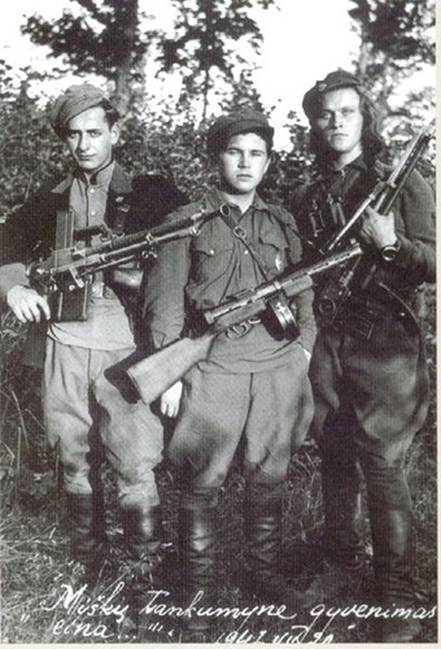
Lithuanian 'forest brothers' from the so-called "Vytis" military district.
Pictures: Mostly from the KGB Museum in Vilnius
Tell a Lithuanian that his country was liberated and that peace after WWII was restored on the 9th of May 1945, as the Russians claim. Tell him that this May 2011 it is 66 years since the Soviet Union and the Western world defeated Hitler's Nazi regime, and that Lithuania since then has been a free, happy country in line with what other European countries experienced after they were occupied in 1939 – 1940 and liberated in 1945. Do not be surprised if you get an angry and annoyed look back. For while we in the Western world, in Russia and in other parts of the world joyfully could celebrate the liberation and the recovered freedom after the World War, Lithuania, the other two Baltic states, and Ukraine were forced to realize that one war had been replaced by a new, much bloodier and more protracted war, lasting from 1944 to at least 1953. What we in the west celebrated in May 1945 was by Lithuanians and the other occupied countries experienced only in 1990 –1991.

The end of World War II saw a Germany dramatically reduced in size. Before long it was also divided into East and West. Germany's defeat meant that Poland and Czechoslovakia returned to the map of Europe after a six-year absence. But not so for Estonia, Latvia, Lithuania, Ukraine and northern East Prussia (Kaliningrad) that all remained occupied by the USSR.
Western radio stations told us, who were lucky enough to grow up on the western side of the iron curtain, thoroughly about the Hungarian uprising against the Soviet intervention in 1956, an uprising that resulted in 2,500 Hungarians and 700 Soviet soldiers losing their lives.
Western television stations showed us in detail what happened when Czechoslovakia was invaded in 1968 by more than 200,000 troops from the Warsaw Pact countries Soviet Union, Poland, East Germany, Hungary and Bulgaria - with the outcome that 72 Czechs and Slovaks were killed when they tried to resist.
However, we got almost nothing to know about the many, many times bloodier uprising against the Soviet that was happening right outside our own front door, in the Baltic States, through nine long years from 1944 to 1953.
It is estimated that approximately 30,000 Balts and 100,000 Soviet soldiers died in this bloody guerrilla war when Estonians, Latvians and Lithuanians withdrew into the woods to organize its powerful armed partisan resistance after the Soviet Union at the end of the second World War, in 1944, pushed the German forces out, and Stalin decided to incorporate the Baltic States into his powerful autocracy instead of giving these countries their freedom and independence back. Today we know that this tragic, involuntary occupation and oppression was to last the whole 47 years, from 1944 to 1991.

Entering a Siberian Gulag (leaf from Eufrosinia Kersnovskaya's notebook). During the period 1940 – 1953 Stalin’s Soviet deported approximately 600,000 individuals from the Baltic States to Siberia. Around 100,000 of them never returned to their homelands.
In addition to the 30,000 Balts who died in direct combats with the Red Army during this nine-year guerrilla war, comes all those who died in or on their way to Siberia, all because of their resistance to the Soviet raids home in the Baltics. It is considered that Josef Stalin was responsible for the deportation of not less than 600,000 Baltic people to the permafrost concentration camps and the gulag prisons during these years, and that probably as many as 100,000 of them died during the stay or during the three-month journey where they were stuffed into icy cold, miserable cattle wagons with thin straw mats as mattresses, and very limited food rations to survive on during the long way to the cold hell, thousands of kilometres north and east.
We speak, in other words, about an almost unimaginable and too little known purges of totally 130,000 people from the Baltic States during the very first years after the Second World War. But let us not forget that also the approximately 100,000 Soviet soldiers who died were victims of the same madness that almost a quarter million people were exposed to by an inhuman despot, still by many is regarded as a hero in Russia, Georgia and other former Soviet republics. The despot Adolf Hitler almost pales in comparison.
In comparison, 58,000 Americans died during the Vietnam War in the years 1960-75, and we were all fed with regular updates on how the war evolved, almost minute by minute.
The distance between the free, western country of Sweden and Lithuania is less than 300 kilometres, shorter than the distance between Vilnius and Klaipeda. But despite the short distance, there was remarkable little information that reached the West about the tragic carnage that took place so close to our own front doors after the war.
We probably had enough to lick our wounds after five years of occupation and the World War II. Even today there are very few people who know much about the bloody Baltic guerrilla war. This is, for example all my Norwegian Encyclopaedia gives of information:
"The armed resistance against the Soviet regime took the form of guerrilla groups in the forests (forest brothers) and had a large scope. Only in 1953 the armed resistance ebbed out. "

Lithuania’s WWII: Torn apart by two super powers.

Many of the partisans were young men returning to Lithuania from the West after WWII to fight for their beloved home country. Here are three of them, with their official and nick names: K. Sirvys - "Sakalas", J. Luksa - "Skirmantas", B. Trumpys - "Rytis". Very few ‘Western partisans’ returned to the West. Almost all of them were killed by the Soviets.
Partisans, or "forest brothers" as they called themselves, were found in all three Baltic countries, but it was in Lithuania that the major groupings were found. It was also here that the really huge death tolls came. It is considered that 22,000 partisans and 70,000 soldiers from the Red Army and NKVD were killed in Lithuania alone, this in addition to the approximately 60,000 Lithuanians who died in Siberia during the early post war years.
The Lithuanian partisans usually appeared in uniforms, with national insignias and identification of rank as like other nations' armies. It is said that the Lithuanian soldiers always saved the last bullet for themselves; they knew all too well that torture, a symbolic trial and execution by hanging, head shot or group execution awaited them if they were captured.
The post war Guerrilla War in Lithuania is normally divided into three different phases:
- The first phase lasted from July 1944 to May 1946, with violent skirmishes and casualties on both sides. More than 10,000 forest brothers lost their lives in battles and skirmishes during these two years. Partisans captured during this period small towns from the Soviet forces, local quisling units were disarmed and the occupants’ offices were destroyed. But the big losses meant that tactics had to be changed.
- The second phase lasted from May 1946 until November 1948. The Lithuanian units were then divided into smaller groups that hid in well-camouflaged bunkers. During this period a joint command was established for all Lithuanian forces fighting against the occupying army. Contacts were also made contacts with the West in this period, but no help arrived.
- The final phase lasted until May 1953. And despite the brutal oppression and forced collectivization, around 2,000 partisans were still active with their armed resistance against the occupation. During this period, they also worked extensively with informing the Lithuanian people by publishing newspapers, books and leaflets. Circulation varied from a few hundred to 5,000. Such publications lasted until 1959.
There were also parallel battles against Soviet forces in Estonia and in Latvia, but in much smaller scale. Only in Western Ukraine, there was fighting in the same scale as in Lithuania.

The Forest Brothers often used cellars, tunnels or more complex underground bunkers as their hideouts, such as the one depicted here.
The Baltic Partisan War came mostly to an end by May 1953, two months after Joseph Stalin died. But the last active resistance man in Lithuania shot himself, rather than surrender, as late as 1965, and the last partisan did not come out from his hiding place before 1986, 42 years after the guerrilla war in the Baltics started.
In 1955, the Soviet-controlled 'Radio Vilnius’ offered amnesty to all the partisans who were still hiding in Lithuania's deep forests, and in 1956 the KGB repeated a similar provision. Such amnesty-deals were of course meant only to lure the last forest brothers, so when the famous partisan leader 'Hawk' was taken that the same year, he was immediately given a symbolic trial and executed. Hawk was an American-born Lithuanian who had returned to his home country to fight the Soviet occupation.
Instead of giving themselves over to the Soviet occupiers, many chose to commit suicide, often by exploding a grenade right in their own faces in order to destroy them so much that they would not be identifiable and thereby create a risk to their relatives' lives. Such suicides occurred until around 1960. Many also managed to obtain false identity and get back into society without being detected.
Many of the Soviet Union's atrocities against the Baltic States have only come to light in earnest after 1991 when these countries regained their freedom and independence. A large part of the archives that mentioned the said matters were, however, brought to Moscow to prevent the World from having access to these highly revealing documents.
But, strangely, in 1994 a former KGB officer decided to go to the Lithuanian authorities with detailed information about how torture and executions had taken place at the KGB headquarters in the Vilnius city centre. He told that there had been secret burials for the victims, just on the outskirts of Vilnius. When the huge mass grave he had told about was found and opened, several hundred corpses of partisans were discovered, all in Lithuanian uniforms, and all obviously tortured to death.
One can ask whether it was a fatal mistake for a small country like Lithuania to so aggressively a predominance they had to understand they would not be able to defeat. Admittedly, there is a general perception that Lithuania thereby was avoiding most of the ‘russification’ that Stalin and later leaders implemented in all other Soviet republics. The Russians were simply too afraid of the Lithuanians as a result of the strong opposition during the post-war years, hence the proportion of Russians in Lithuania today represents only 6% of the population, compared to more than 30% in Latvia and around 25% in Estonia.
But the bloodshed in the Baltics, and the incredibly extensive deportations to Siberia, as a result of the partisan opposition, made that these three countries lost too many of their best men and women. The hero status they may have achieved around the world never became significantly large. We in the West did not know what really happened, and when we finally learned, far too many decades have passed to achieve a proper attention for the heroes, the very guerrilla war, the deportations and the unbelievable sufferings the Baltic people underwent on the Siberian permafrost during the 1940s and 1950s.
Lithuania, Latvia and Estonia have paid an extremely high price for their rebellion behaviours, and are unlikely ever to receive the honour and the redress they deserve for their courage to fight the injustice they were subjected to during the ruthless Soviet period.
When World War II ended, the West chose to forget Lithuania

The historic meeting near the end of World War II, the Yalta Conference, became fatal for Lithuania. It involved three key allied leaders. Left to right: Winston Churchill, Prime Minister of the United Kingdom; Franklin D. Roosevelt, President of the United States; and Joseph Stalin, Premier of the Soviet Union.
For several years after World War the Balts believed that the U.S. and other Allied powers would come to their rescue and help to free them from the Soviet occupation. This was fatal.
The partisan leaders were familiar with the Atlantic Charter, which was signed by Churchill and Roosevelt 12 August 1941 aboard the U.S. cruiser Augusta in Newfoundland, a charter later acceded to on 1 January 1942 by all countries involved in the war against Germany and Japan - including the Soviet Union. This declaration stated that all territorial changes resulting from the war would only take place after the population's own desires, and that any people should have the right freely to choose their form of government.
What the Baltic people did not know, was that their case head was not at all discussed when the British Prime Minister, Winston Churchill, the U.S. President Franklin D. Roosevelt and the Soviet leader Josef Stalin in February 1945 met in the city of Yalta on the Black Sea to lay the conditions for peace and the post-war period. The Baltic States were totally forgotten; but they did not know about it, and therefore continued the impossible fight against the evil superior force until 1953.
It has been speculated that Roosevelt's failing health may have been the reason why Stalin so easily got the upper hand at the Yalta Conference. The outcome was, in any case, very tragic for the Baltic States, and only in 2005 the American president, George W. Bush came here to apologise on behalf of the United States. Russia’s President, Vladimir Putin, was also asked to apologise for the atrocities against the Baltic States in the years after Yalta. But Russia still considers that they 'liberated' the Baltics and sees no reason to excuse themselves. It went even so far that Putin declared Lithuania's President Valdas Adamkus 'persona non grata' after the latter refused to come to Moscow to participate in Russia’s anniversary celebration of the Soviet victory over Nazi Germany on 9 May 2005.
In the years after WWII a number of Lithuanian agents were amazingly capable of getting in and out of the country several times, and in December 1947 a full delegation travelled to Western Europe to present their case to the Pope and to Western governments. But no countries or leaders dared go into conflict with Stalin's Soviet Union, and Lithuanians call for help was largely met with deaf ears.
Though not quite. Both U.S. and UK intelligence agencies gave their orders to see what might be done to create secret anti-communist organizations and operations behind the Iron Curtain. They also helped to organise the radio stations 'Radio Liberty' and 'Radio Free Europe', which for many years thereafter conveyed useful information to the Baltics. In 1951 came the 'Voice of America' on air, and thus gave hundreds of thousands of Baltic war refugees in the United States a voice back to their home countries at the Baltic Sea.
Unfortunately, the success of the Western intelligence services and their 'relief efforts' very much failed, which in retrospect largely is attributed to the British intelligence officer Kim Philby, the man who in reality was a Soviet spy who unfortunately contributed so actively to the killing of tens of thousands of Baltic people.
The intelligence organizations' attempts to help the Baltic States irritated Stalin violently, and he therefore imposed increasingly tough measures against the uprisings. His NKVD (later renamed the KGB) had more or less free hands to exercise extensive torture against individuals and groups believed being in league with the partisans. Vague suspicions were enough to allow use of cruel torture methods. Many were hanged or shot without any real form of litigation. A huge number of relatives and family members of the partisans were sent to slave labour camps in Siberia. All private farms were incorporated into collective farms to prevent them from continuing to provide food to the partisans, and many farmers were deported to Siberia. The West's attempts to help got quite the reverse effect. Tyranny had triumphed, and our close neighbours on the Baltic Sea's south coast were once again suffering in a most cruel way.

One of the many killed Lithuanian partisans,
Juozas Luksa – "Skirmantas", "Daumantas",
after his death on the 4th of September 1951.
Photo: KGB
Few in the West know that Lithuania 500 years ago was considered Europe's largest country, stretching from the Baltic to the Black Sea. Few in our today's West know the proud and honourable cultural history of the Baltic countries, or that these countries were economically fully on par with Scandinavia until World War II, and few know about the heroic guerrilla war these three nations fought against the mighty Soviet Union after WWII.
During five world war years, the Baltic area became the incredibly bloody and sad battlefield where Stalin and Hitler pushed each other back and forth, with fatal and almost incomprehensible destruction and murders of hundreds of thousands innocent people as result. It was here that the Holocaust saw its very worst outcome on Earth, when 95% of the large Jewish population of Lithuania was exterminated. It was here that Europe's longest and bloodiest guerrilla war and the ensuing mass deportations to Siberia took place through more than a decade during and after WWII.
Hundreds of thousands of our closest neighbours died just outside our own front door (or were deported to the gulag camps in the permafrost of Siberia). These terrible things happened only 300 kilometres away from Lithuania’s closest Western coast, at the same time as we westerners celebrated our new freedom and the beginning of the new era we today know as the proud, free Western World.
Didn’t we in the West know, or did we prefer not to know?
- Bookmark :
- Digg
- del.icio.us
- Stumbleupon
- Redit it
- Posted by - (0) Comment
CHRISTMAS IN SIBERIA
A Lithuanian family at Lena river, 1942
“The tents were freezing cold, harsh, and distressing; so, the adults decided to build better living conditions. "We can build barracks," said one Lithuanian, "We can catch the logs in the Lena River." The men waded barefoot into the icy water, caught floating logs, brought them to shore, and built the barracks. They covered the outside walls with snow and ice which they learned would help keep out the frigid temperature. They also found a large iron stove, which they placed in the middle of the building.”
- Bookmark :
- Digg
- del.icio.us
- Stumbleupon
- Redit it
VilNews e-magazine is published in Vilnius, Lithuania. Editor-in-Chief: Mr. Aage Myhre. Inquires to the editors: editor@VilNews.com.
Code of Ethics: See Section 2 – about VilNews. VilNews is not responsible for content on external links/web pages.
HOW TO ADVERTISE IN VILNEWS.
All content is copyrighted © 2011. UAB ‘VilNews’.

 Click on the buttons to open and read each of VilNews' 18 sub-sections
Click on the buttons to open and read each of VilNews' 18 sub-sections 

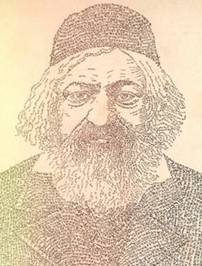
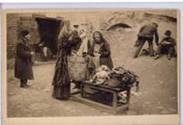


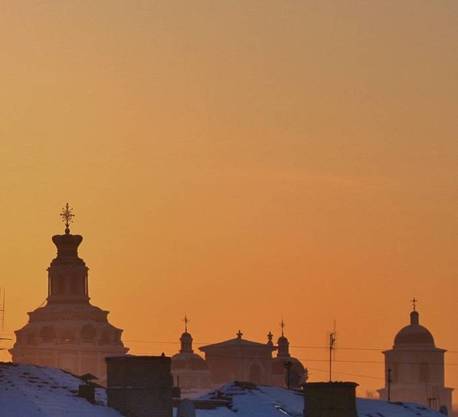



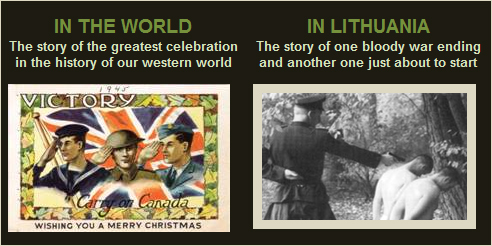

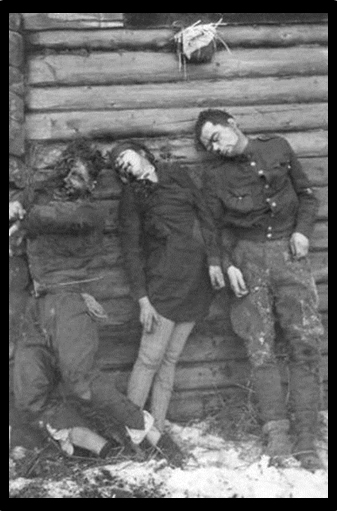
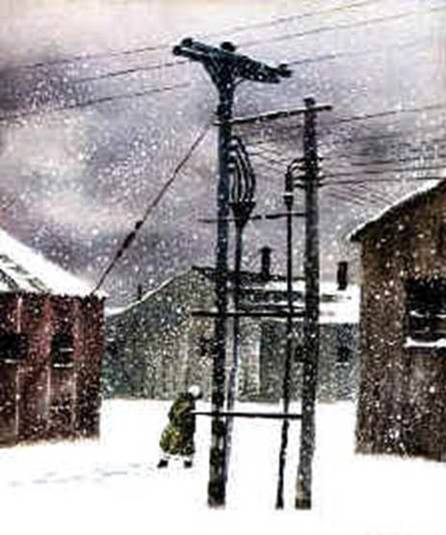
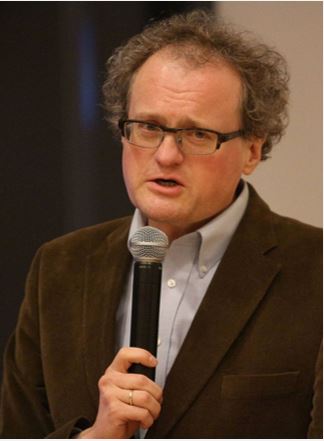
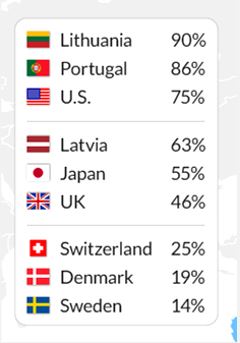
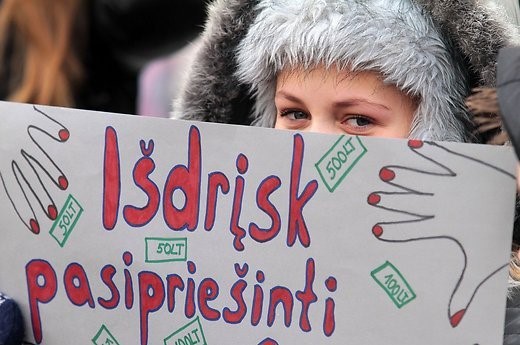


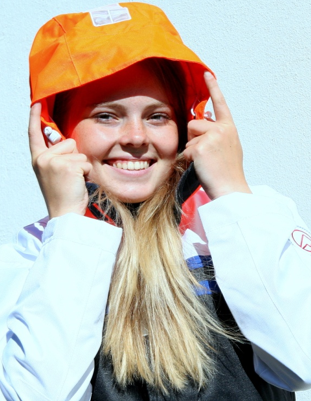
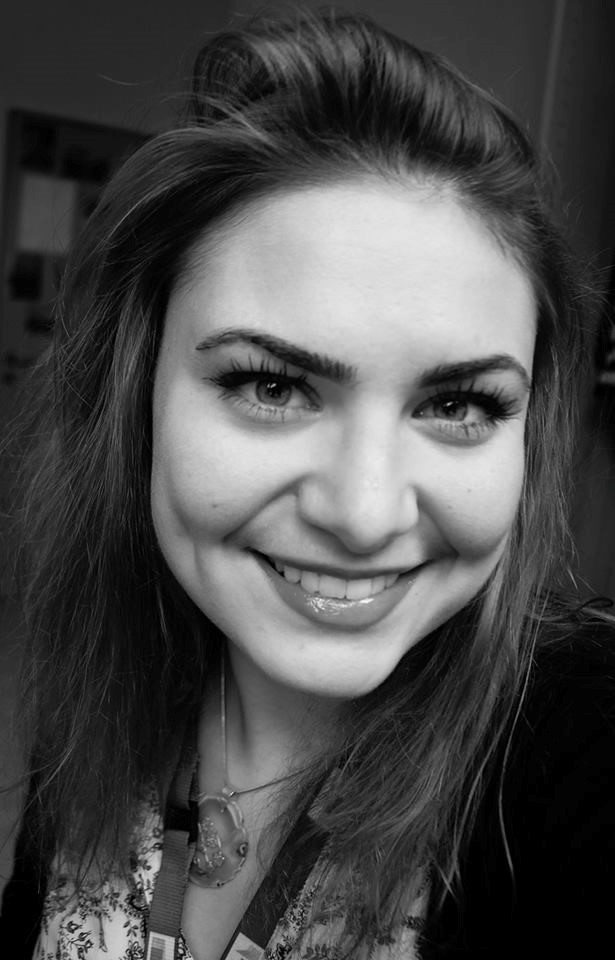
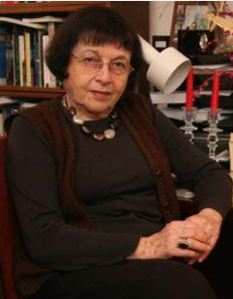
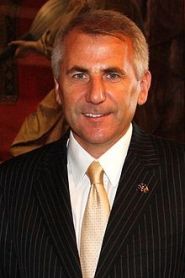
.jpg)
